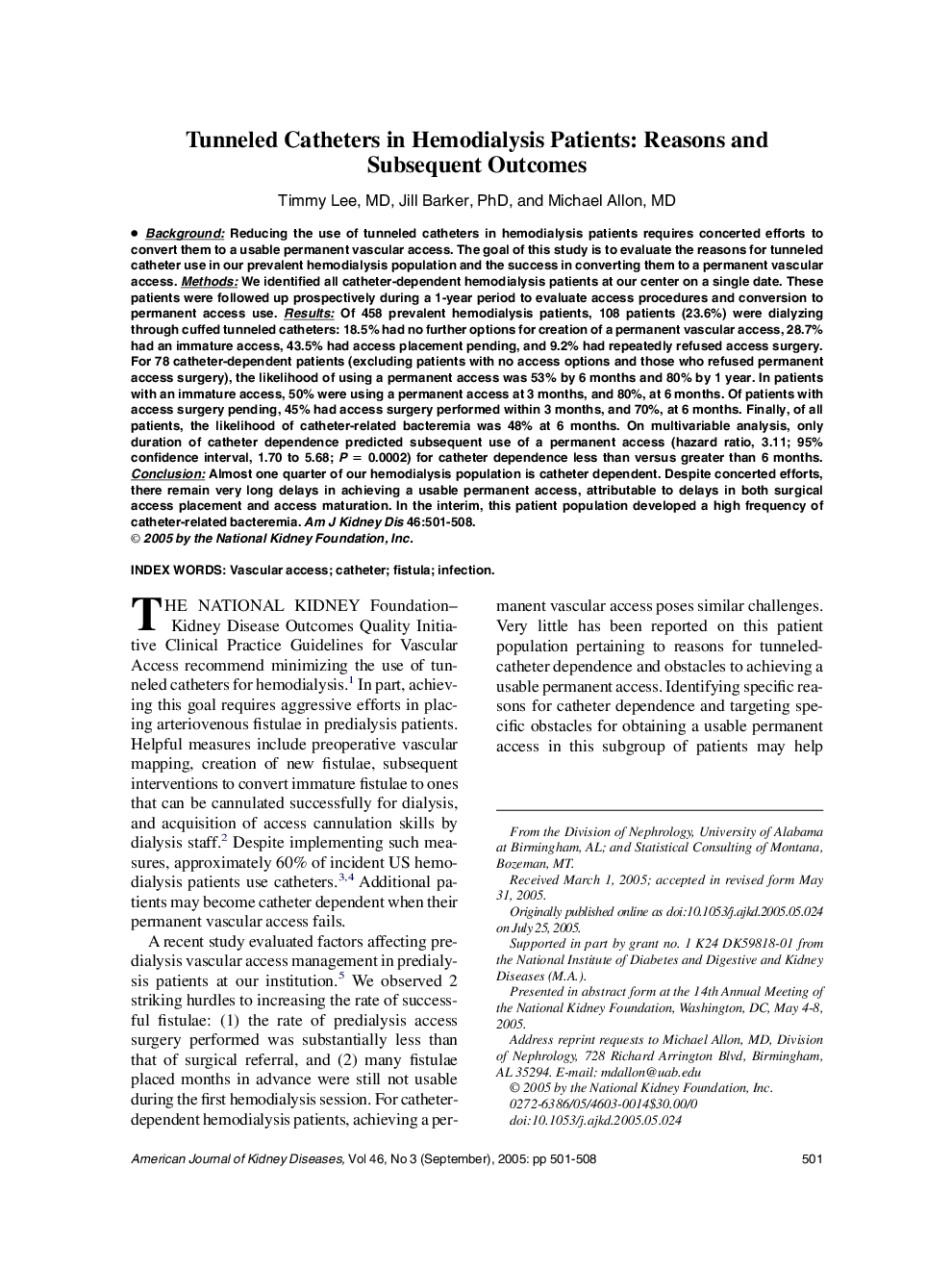| Article ID | Journal | Published Year | Pages | File Type |
|---|---|---|---|---|
| 10047426 | American Journal of Kidney Diseases | 2005 | 8 Pages |
Abstract
Background: Reducing the use of tunneled catheters in hemodialysis patients requires concerted efforts to convert them to a usable permanent vascular access. The goal of this study is to evaluate the reasons for tunneled catheter use in our prevalent hemodialysis population and the success in converting them to a permanent vascular access. Methods: We identified all catheter-dependent hemodialysis patients at our center on a single date. These patients were followed up prospectively during a 1-year period to evaluate access procedures and conversion to permanent access use. Results: Of 458 prevalent hemodialysis patients, 108 patients (23.6%) were dialyzing through cuffed tunneled catheters: 18.5% had no further options for creation of a permanent vascular access, 28.7% had an immature access, 43.5% had access placement pending, and 9.2% had repeatedly refused access surgery. For 78 catheter-dependent patients (excluding patients with no access options and those who refused permanent access surgery), the likelihood of using a permanent access was 53% by 6 months and 80% by 1 year. In patients with an immature access, 50% were using a permanent access at 3 months, and 80%, at 6 months. Of patients with access surgery pending, 45% had access surgery performed within 3 months, and 70%, at 6 months. Finally, of all patients, the likelihood of catheter-related bacteremia was 48% at 6 months. On multivariable analysis, only duration of catheter dependence predicted subsequent use of a permanent access (hazard ratio, 3.11; 95% confidence interval, 1.70 to 5.68; P = 0.0002) for catheter dependence less than versus greater than 6 months. Conclusion: Almost one quarter of our hemodialysis population is catheter dependent. Despite concerted efforts, there remain very long delays in achieving a usable permanent access, attributable to delays in both surgical access placement and access maturation. In the interim, this patient population developed a high frequency of catheter-related bacteremia.
Related Topics
Health Sciences
Medicine and Dentistry
Nephrology
Authors
Timmy MD, Jill PhD, Michael MD,
